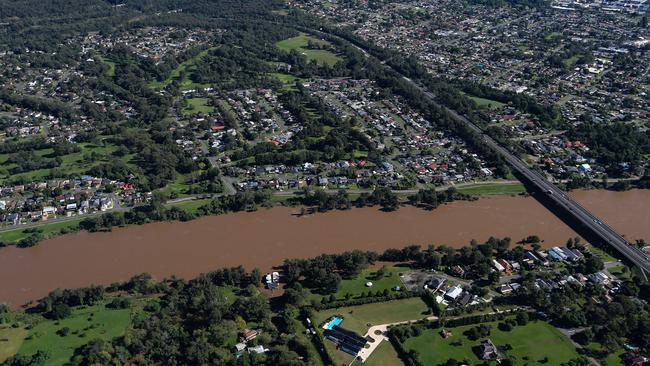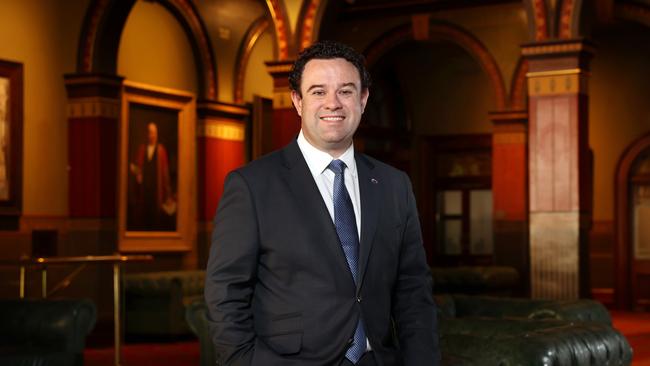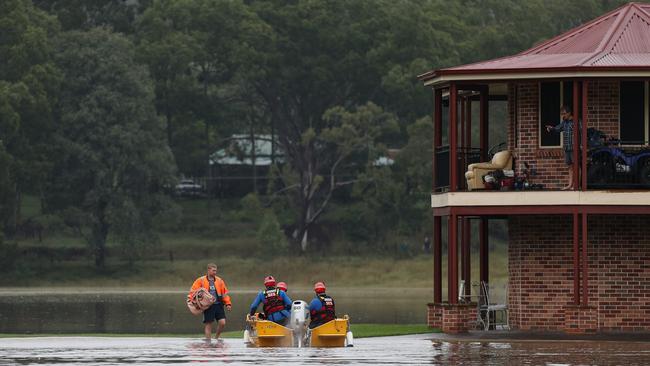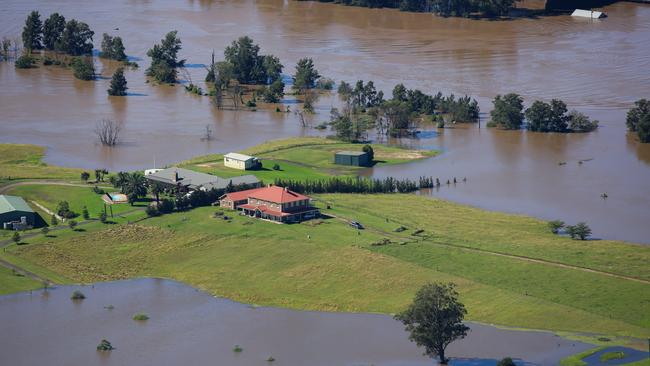Warragamba Dam raising: Inquiry calls for flood-prone land buyback, improved evacuation routes
Thousands of western Sydney homeowners could see their properties acquired by the government under a “buyback” plan aimed at reducing the number of people impacted by floods.
Penrith
Don't miss out on the headlines from Penrith. Followed categories will be added to My News.
Plans to raise the Warragamba Dam wall have been ridiculed by a parliamentary inquiry — with calls for the NSW Government to scrap the $1.6 billion proposal for “improved evacuation routes” and a buyback scheme to reduce the number of people living in flood prone areas.

The inquiry into the proposal to raise the Warragamba Dam Wall, chaired by Upper House independent MLC Justin Field, released its interim report this week — calling for consideration of “alternatives to a dam wall raising”.
“The March 2021 flood event in the Hawkesbury Nepean Valley highlighted the substantial flood risk in the valley and the importance of flood risk planning and management to limit the impact of flooding on lives and property,” Mr Field said in the report.
MORE FROM JAKE McCALLUM
- CASTLEREAGH FLOOD EVACUATION UPGRADE REJECTED: FRESH SCRUTINY ON INFRASTRUCTURE NSW DECISION
- WESTERN SYDNEY FLOODING: MARCH FLOODS AS IT HAPPENED
- 12,000 HOMES DESTROYED, 90,000 PEOPLE DISPLACED IF WORST-EVER HAWKESBURY NEPEAN FLOOD WAS REPEATED
- FLOOD PLAN REVEALS VICTIMS TO BE HOUSED AT OLYMPIC PARK DURING NATURAL DISASTERS
“The Warragamba catchment contributed less than 60 per cent of the flows to the March flood, indicating the significant contribution to major flooding in the valley from catchments other than Warragamba and demonstrating some of the limitations of this proposal.”
The inquiry heard a 14 metre raising of the wall would be breached in two days — when a weather event similar to the peak of the March floods occurred again.

“The focus of the NSW Government should be directed to those flood risk mitigation options that can maximise flood risk mitigation while minimising upstream impacts,” he said.
“The evidence heard by the Committee casts significant doubt over whether raising the Warragamba Dam wall can achieve those objectives.”
Mr Field said expert analysis found the project would “have significant, if not devastating, impacts on upstream biodiversity”, while also impacting the future integrity of the Greater Blue Mountains World Heritage Area and Aboriginal Cultural Heritage.

The interim report highlighted the submission of Committee for Sydney resilience director Sam Kernaghan’s concerns over a lack of evacuation infrastructure for 134,000 residents living in the region.
“We know that the current evacuation arrangements cannot guarantee that these thousands of residents would be able to safely evacuate due to lagging flood evacuation infrastructure,” he said at the time.
“We need a plan that sets a clear vision and action for how the Government will reduce the number of people at risk to floods across the Hawkesbury-Nepean flood plain.
“Through zoning, tradeable development rights and upgrading evacuation routes, the plan must reduce the risk to current residents, stop adding new ones where there is additional risk and through a buyback policy, for instance, providing a safety net for those unable to afford insurance and to rebuild post-disaster or exit the flood plain.”
Meanwhile, Western Sydney Minster Stuart Ayres criticised calls for a private property buy-back scheme, telling NewsCorp “buying out properties will cost billions more than raising the dam wall.”

“Raising the dam wall is about temporarily holding water behind the dam wall during a flood rather than it being in people’s homes,” he said.
“All the options canvassed in the Upper House report have been assessed by Government and are detailed in chapter 4 of the EIS.
“Improving flood evacuation routes is an important part of making the Hawkesbury-Nepean a more flood resilient community and will need to continue to happen even if the dam wall is raised — Improving flood evacuation routes helps people leave flood prone areas but doesn’t reduce flood levels to the same extent as raising the dam wall.”
Mr Ayres said if the wall been raised before the March floods, “we would have had significantly lower peaks and spills would have been delayed by three to four days”.


The criticism of the billion-dollar proposal comes just days after the NSW Government released the Environmental Impact Statement for the project — which argued it was designed to “reduce flood risk to life, property and social amenity from regional floods in the Hawkesbury-Nepean Valley now and in the future”.
The EIS highlighted the impact Warragamba Dam has on the catchment and downstream flooding, suggesting it contributes up to 70 per cent of flow during flooding in the Hawkesbury-Nepean.
“The Project would significantly reduce the risk to life and allow more time for evacuations during critical flood events,” a planner for the project argued.
“By reducing the depth and extent of flooding, it would provide a reduction to property damages to people’s homes and communities by on average around 75 per cent over the long term.

“The major benefits would be experienced in the Wallacia, Penrith/Emu Plains, Richmond/Windsor, and South Creek/ Eastern Creek areas of the flood plain, and to a lesser extent in the Lower Hawkesbury.”
The project would see the central spillway level raised by 12 metres, while the secondary spillway would be raised by 14 metres.
Side walls of the dam would be raised by 17 metres requiring a massive 620,000 cubic metres of concrete and 11,000 tonnes of reinforced steel.
The project would result in an increase of water storage from around 2000 gigalitres to 3000.
Western Sydney Minister Stuart Ayres was contacted for comment.



